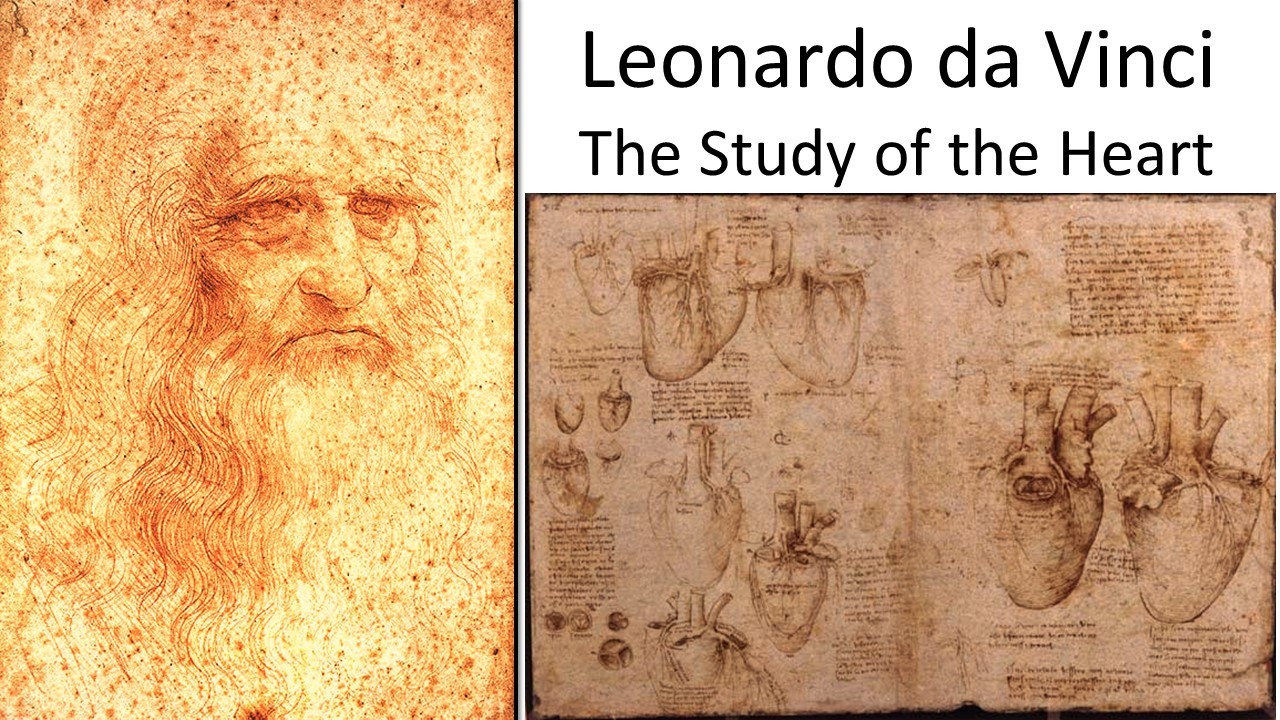
Leonardo da Vinci, a Polymath - The Study of the Heart
Leonardo da Vinci was an Italian polymath, with knowledge and expertise spanning across numerous disciplines. Leonardo was the epitome of a true Renaissance man, and exceled as a painter, sculptor, architect, inventor, military engineer and draftsman.
Gifted with a brilliant intellect and a curious mind, Leonardo constantly explored and investigated the laws of nature and science. Despite the extremely limited technology available back then, Leonardo conducted numerous studies in a variety of disciplines, contributing significantly to advancing the understanding of science and art. His works have influenced countless artists and scientists over the centuries.
In the area of biological science, Leonardo was really interested in anatomy and physiology, and his investigation into the heart marked a major transition in the early history of cardiology. When Leonardo da Vinci was born (1452), the scientific understanding of the heart function was still in its infancy. Leonardo was one of the earliest involved in many post-mortem examinations of the human body, as he was interested in studying it, both from an artistic and scientific point of view. This because in order to draw, paint or sculpt the human body accurately, knowledge of its anatomy is essential. Moreover, studying the structures of the human body is also vital to advance the scientific understanding. Leonardo was motivated to investigate human morphology and physiology, in order to connect the various structures of the body and their functions.
He explored the different body parts and utilized his ability to draw, illustrating them very accurately. In particular, the heart fascinated Leonardo, and he called it an instrumento mirabile, invenzionato dal sommo maestro (a wonderful instrument invented by the Supreme Master). Initially, his drawings of the heart were based on the hearts of oxen or pigs, but later he got the opportunity to gain access to human cadavers for dissection.
Leonardo da Vinci is considered a Renaissance cardiologist. Through his studies, Leonardo gained in-depth understanding of cardiovascular anatomy and physiology, and hemodynamics. He described the two upper and two lower chambers of the heart, and that there was a functional distinction between the atria and ventricles, and also showed that the heart valves are critical to its function. Leonardo produced the first representation of the coronary arteries, explaining the heart fluid dynamics. In addition to physiology, Leonardo had also knowledge of pathophysiology, and deduced that fatty deposits in the blood vessels (atherosclerosis) restrict blood supply to the heart, leading to dysfunction and disease.
Leonardo da Vinci was a pioneer of scientific studies in cardiology and his observations were in contradiction to the medical theory of that time. By conducting studies in anatomy and physiology, Leonardo was one of the earliest to apply an observational approach to science. He was driven by curiosity, inspiration, and hunger for learning and discovery.
References
Bambach, C. C. (Ed.). (2003). Leonardo da Vinci, Master Draftsman. Metropolitan Museum of Art.
Brown, D. A. (1998). Leonardo Da Vinci: Origins of a Genius. Yale University Press.
Capra, F. (2007). The Science of Leonardo. Doubleday.
Il codice di Leonardo da Vinci nella biblioteca del principe Trivulzio. Edit. L. Beltrami, Milan, 1892.
Isaacson, W. (2017). Leonardo da Vinci. Simon & Schuster.
Magnano, M. (2007). Leonardo, collana I Geni dell’arte. Mondadori Arte.
Pedretti, C. (2006). Leonardo da Vinci. Surrey: Taj Books International.
Richter, J.-P. 1883 (reprinted 1970). The Notebooks of Leonardo da Vinci: Compiled and Edited from the Original Manuscripts. Dover Publications, New York.
Rosci, M. (1977). Leonardo. Bay Books Pty Ltd.
Vasari, G. (B. Burroughs, ed.) 1946. Lives of the Artists: Biographies of the Most Eminent Architects, Painters and Sculptors of Italy. Simon and Schuster, New York.
Thanks for sharing the article!
One of the most amazing things about Leonardo, is that he was able to do excellent work in science, without almost any technology.
I have seen the exhibition of his drawings, great works, where art meets science!
Leonardo has been an inspiration for many artists and scientists over the centuries!
Great Article!